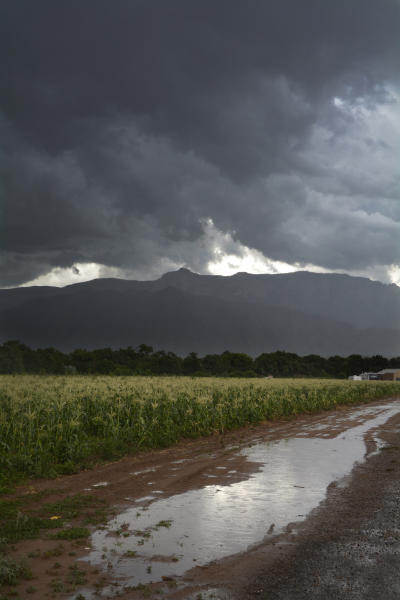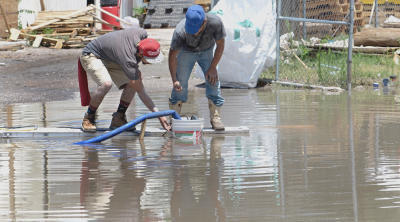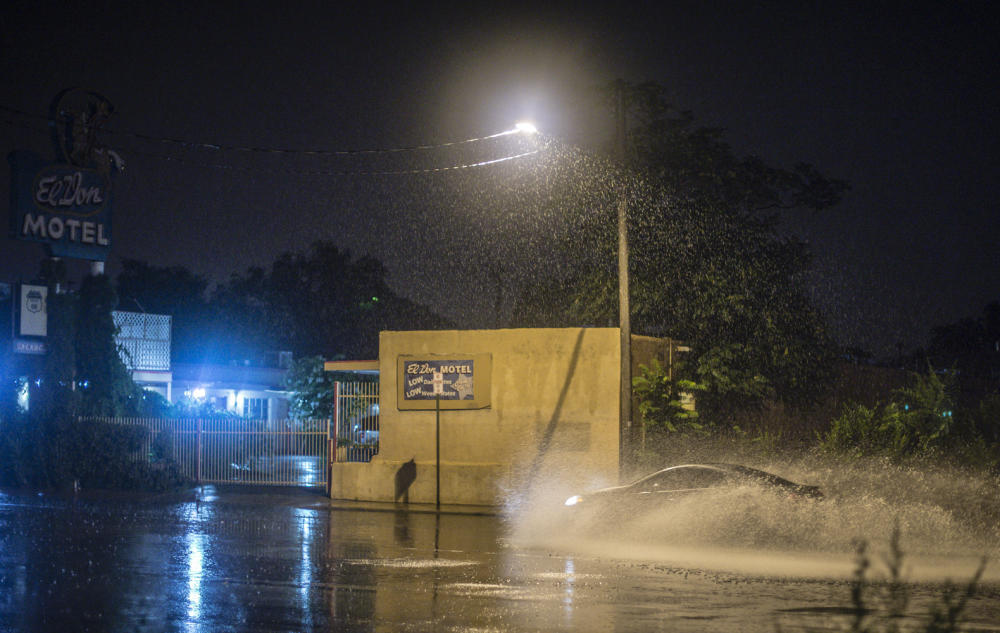"Pretty much all the climate indicators are calling for an average to above-average monsoon season," Brian Guyer, meteorologist with the Albuquerque office of the National Weather Service, said Tuesday.
In the first week, we've already had 60 percent of an average monsoon season, he said, so "I'm guessing we are headed to above average."
Albuquerque's official 24-hour rainfall total on Monday and Tuesday was 2.24 inches, besting the city's previous 24-hour total of 2.08 inches, set on Sept. 28, 1893.
That brings Albuquerque's total rain for the first week of this month to well over 2 inches. The average July rain total for Albuquerque is 1.5 inches, and the city's record total for the month is 4.9 inches, set in 1930. As of 6 p.m. Tuesday, Albuquerque's total rainfall for the year was 6.60 inches, 3.14 inches above normal.
Monsoon season runs from July 1 through September 30. Guyer said that Albuquerque's average rainfall during the period is 3.79 inches and that the city got more than 8 inches of rain in its wettest monsoon seasons, in 1988 and 2006. By contrast, Guyer said, Albuquerque's driest monsoon season was in 1953, when there was only 1.1 inches of rain.
"Typically, the wettest weeks of the monsoon season are the last week of July and the first week in August," Guyer said.

Guyer said that over the past five days, just about every recording site in central and eastern New Mexico showed between 1 and 3 inches of rain, and up to 5 inches were reported in the Sangre de Cristo Mountains. Clovis reported 3.25 inches between 11:30 a.m. Monday and 9:30 a.m. Tuesday.
Katherine Yuhas, water conservation officer for the Albuquerque Bernalillo County Water Utility Authority, said Tuesday that plentiful rain and the lower temperatures that come with it have had a noticeable impact on water consumption.
"Through July 5, customers have used 1 billion gallons less water than they used during the same period last year," Yuhas said. "The rain has been wonderful for the conservation program because people are not watering as much. But the other piece of it is that swamp coolers are not being used as much because it is cooler."
Farmers are reaping the benefits of the rain and dealing with challenges caused by the wet weather.
"It has been a good water year," said Corky Herkenhoff, who grows mostly alfalfa hay on 780 acres at San Acacia, 13 miles north of Socorro. "Between (hay) cuttings we will irrigate twice, but this year, for a few fields, we have just irrigated once between cuttings. This year is a done deal for water."
And because spring rains and late snows have allowed the storing of water in El Vado Reservoir in Rio Arriba County, Herkenhoff believes the irrigation season next year will get off to a good start.

"I've had quite a bit of rain and real regular," he said. "I have an alfalfa field we have watered only two times. Last night (Monday), we had a nice rain. We got three-quarters of an inch, and it penetrates pretty deep, so we forgo an irrigation."
But when you are growing hay, as Herkenhoff and Lundmark are, too much rain can be as bad as not enough.
"You want moisture on your hay when it's growing," Lundmark said Tuesday. "But once it's cut and it gets rained on, it diminishes the quality."
Herkenhoff understands that.
"When you have a good water year, you have a lot of wet hay," he said. "When nobody wants water, you got black hay. And when everybody's fighting for water, you got green hay."
Now, Lundmark is looking for five consecutive dry, warmer days so he can get his second cutting of hay done, baled and in the barn.
"And we got a 50 percent chance of rain this evening," he said.




Reader Comments
to our Newsletter